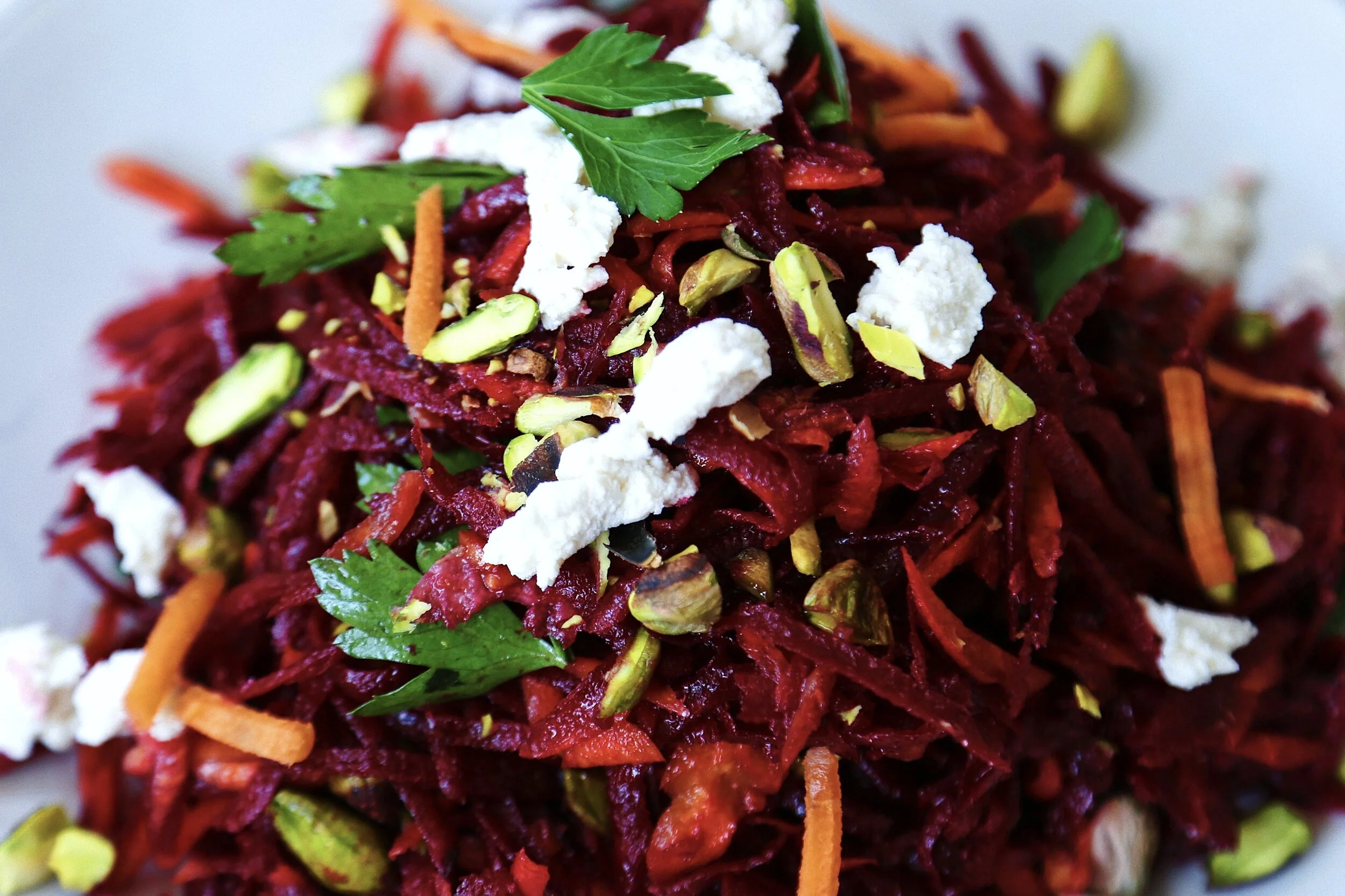How to store your summer produce to last
Want to bring more fresh produce into your home to encourage and support a healthy lifestyle, but worry it’ll go bad before you’re able to eat it? In this article I share how to store your summer produce to last.
Whether you’re buying more than you need, plans change, or the recipe you hoped to make just isn’t going to happen - the struggle to properly store produce to avoid waste is real.
This is an area I’ve become a tiny bit of an expert in after years of recipe developing and meal planning for myself and my clients.
As you read this article, keep in mind that there are several methods to storing all kinds of produce. The ones I share here are what has worked incredibly well for me. If I don’t mentioned a particular method, it’s either because it didn’t work well for us, or I haven’t had the need to try it yet.
If you have a method that works well for you that’s not mentioned here, don’t even think twice or question yourself - do what works for you!
Before I get into the specifics, I want to share my “fridge philosophy” (well aware of just how nerdy that sounds) with you:
I treat our refrigerator as if it were an indoor garden. I check on the produce stored in it daily, even if just for a moment, to make sure nothing requires my attention.
Doing this helps prevent food from spoiling for sure, but it’s also a helpful to check on items that are ripening and should consumed ASAP, if a storing method is working, or if something needs to be turned into jam, pesto, sauce or dressing sooner than planned. It also keeps me familiar with what I’ve bought because I buy a lot of produce.
Even if everything is fine, which is the case some days, simply connecting with food and taking pride in the care I’m offering brings so much joy.
For the next year, at the start of each season, I’ll share with you the best ways to store what’s in season.
For now, let’s start with everyone’s favorite season: Summer.
Berries and Cherries
I like to wash and store in the refrigerator in a shallow dish, giving them plenty of breathing room. And make sure to remove any berries or cherries showing signs of mold before storing. This method typically helps them last 5-7 days in the fridge (but we always eat them faster).
With cherries, I like to buy more than I need in the summer for the purpose of freezing them for the winter months (as they’re not available here year-round like berries). In this case, I will wash the cherries, slice them in half and remove the pits and then lay them on a baking sheet in a single layer to freeze. Once frozen, I will store in a slasher bag to use throughout the fall and winter in warming smoothies and breakfast bowls.
Corn
We keep whole cobs in their husks in the crisper drawer of your refrigerator, or if we’re using just kernels for salads and bowls, we slice the kernels off the cobs and store in an airtight container to use throughout the week.
Corn will be the sweetest tasting if consumed within the week, however, both methods will keep corn fresh longer than the flavor will last.
Lettuce and leafy greens
Whether I purchase loose lettuce leaves or dark leafy greens, I store them the same way: rinse the leaves as soon as I get home and lay them flat on a dish towel, still damp. Then, I’ll roll the dish towel, with the lettuce leaves inside, until they’re all completely covered and rolled up. From here, I will store on a shelf in the fridge or in the crisper. There are a few methods that work well for lettuce and leafy greens, but this works really well for us and keeps them fresh and crisp for a full week.
As I return to the lettuce and leafy greens for meals throughout the week, I will give them a quick rinse before re-wrapping them in the dish towel (even if the towel is still damp).
Summer Squash
Because summer squash, such as zucchini or crooked neck, are incredibly water dense they require refrigeration and are best stored in the crisper. To prevent moisture from other vegetables getting on the skin (which can lead to mold), I store the squash in a cloth bag. This method will keep the squash for a solid week.
Tomatoes
Tomatoes taste best when stored and eaten at room temperature. So I like to keep mine on the countertop in a shallow bowl that offers some space between to let them breathe.
If you can’t get through your tomatoes fast enough, and too many ripen at once, refrigerate them. While this will affect their flavor, it will keep them for up to an additional week. When you go to eat one, try removing it from the fridge and leaving it on your countertop to come to room temperature before eating. This will help bring it to a more desirable flavor and texture.
Stone Fruits
While still firm, let stone fruits like peaches, apricots, nectarines and plums, sit out at room temperature in a single layer on a plate or small bowl. Once they’re ripe they will be slightly soft; this is how you know they are ready to eat. If too many ripen at once, transfer to the fridge to keep for an extra few days. When selecting fruits like nectarines and peaches, the redder the better. This means they were perfectly ripe when picked. Even if hard when purchased, they will soften to full flavor. Avoid ones with a greenish hues - these were picked too early and won’t ripen to full flavor.
Watermelon
Melons can be stored on the countertop at a cool temperature, but since this is tough in the summer months, it’s best to slice them open and prepare (sliced as you wish) to store in an air tight container in the fridge. Prepared this way they will last unto one week.
When choosing a whole watermelon, look for a deep green colored-skin and heavy for their size (the later means they were ripened longer and contain more water - making them extra hydrating and juicy). If you’re buying a half or quarter melon, make sure the flesh is a deep pink-red, which means it’s ripe, juicy and full of flavor.
And there you have it - all you need to know to store your summer fruits and vegetables for optimal taste and flavor and to last the week!
I hope all this talk about produce helps optimize your efforts to improve your diet and eat more plant-based whole foods throughout the week!
If you liked this article, be sure to sign up for my newsletter to receive this type of content and more delivered to your inbox every week!














